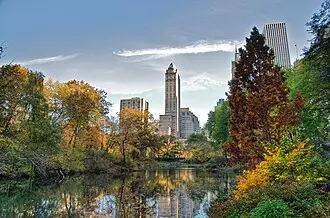
Landscape design is more than just a profession - it's a beautiful art form that seamlessly blends nature and culture. It's the work of talented landscape designers who bring together their expertise and creativity to create stunning outdoor spaces. In contemporary practice, landscape design has become the bridge between landscape architecture and garden design, encompassing a wide range of elements to enhance the overall beauty and functionality of a space.
Designing with Purpose
Landscape design is a comprehensive approach that encompasses both the master landscape planning of a property and the intricate design of individual garden elements. It takes into account practical, aesthetic, horticultural, and environmental aspects to create harmonious outdoor spaces. Landscape designers often collaborate with professionals in related fields such as architecture, civil engineering, and surveying to bring their visions to life.
There are two main professional roles involved in design projects: landscape design and landscape architecture. Landscape design focuses on artistic composition, horticultural finesse, and detailed involvement from conceptual stages to final construction. On the other hand, landscape architecture emphasizes urban planning, large-scale projects, and collaboration with contractors for implementation. However, there can be a significant overlap of talents and skills between the two roles.

The Design Process
The landscape design process involves thorough research, gathering ideas, and creating a well-thought-out plan. Design factors include both objective qualities, such as climate, topography, and drainage, as well as subjective qualities, such as client preferences and desirable elements to incorporate or modify. Designers consider a multitude of factors, including plant selection, safety, balance, and artistic focal points to ensure the garden thrives over time.
With the advent of online landscape design, professionals can now remotely create and plan sites using two-dimensional images. While this method has its limitations, it allows designers to work around diverse soil conditions and deliver beautiful landscapes without physically visiting the location.
A Blend of Skill and Education
Historically, landscape designers learned their craft through apprenticeships with accomplished masters in the field. However, the classification of landscape architect was created in the late 19th century, establishing educational and licensing requirements for the title. Today, institutional education in landscape design is available at various levels, from community college programs to university degrees in landscape architecture. Specialties and minors in related fields further enhance a designer's knowledge and expertise.

In addition to formal education, aspiring landscape designers can gain valuable experience through apprenticeships, working with professionals in the industry. The diversity of backgrounds and skills within the field allows for tailored matches between designers and clients, ensuring the perfect fit for each project.
A Continual Journey
Many landscape designers have a deep passion for gardening and are actively involved in the ongoing care and management of landscapes. Gardens are living, ever-evolving spaces that require attention and nurturing. As such, landscape designers often find themselves wearing multiple hats, offering services in both design and garden maintenance.
Landscape design is a multidimensional field that continues to evolve and grow. With a focus on creating beautiful, functional, and sustainable outdoor spaces, landscape designers play a pivotal role in shaping our surroundings.
Conclusion
Landscape design is an art form that brings together nature and culture in perfect harmony. With their expertise and creative vision, landscape designers create breathtaking outdoor spaces that enhance the beauty of our surroundings. From detailed planning to the selection of plants and the ongoing care of gardens, these professionals play a vital role in shaping our outdoor environments. Whether you're looking to transform your backyard or create a public park, landscape design is the key to achieving a perfect balance between aesthetics and functionality.

















